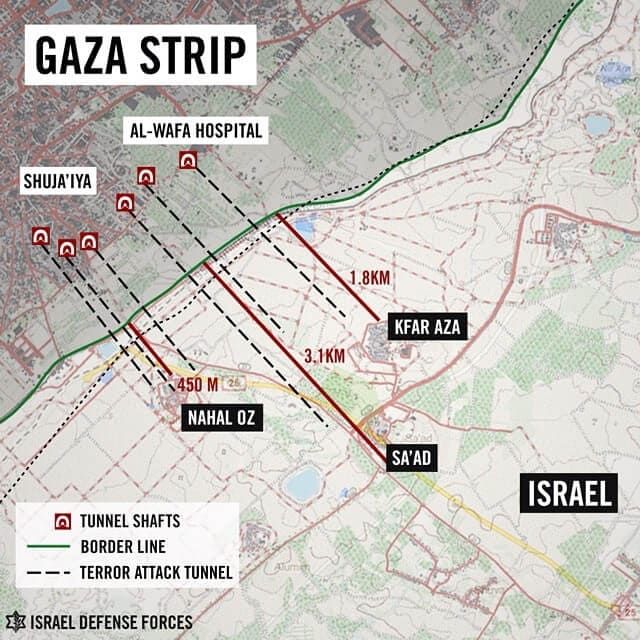As the Gaza conflict moves into its third week, a number of contentious issues have emerged. A great deal has been said and written about these issues, and some of the best pieces have been collected below.
1. The moral basis for Israel’s military campaign.
Before engaging in any form of defense for Israel’s military activity in Gaza, it is vital to understand why Israel is fighting in the first place.
No one has articulated Israel’s imperative to fight better than Haaretz columnist Ari Shavit:
What are we fighting for? Our home. The Jewish people was a people without a home, who managed the impossible, and created a home for itself. The State of Israel is a miracle. We must not give up this miracle. We must not endanger it, and we must not take its existence for granted. When dark forces try to annihilate it, we must defend it. When hypocritical, self-righteous forces try to weaken it, we must make it stronger. We are surrounded by a new threat of Muslim Arab chaos. Enemies seeking our blood amass at our walls.
…
We must stand strong against the evil tunnels and the wicked rockets that threaten us. We’ve forgotten how to say it, and sometimes it’s difficult to whisper it, but we’re right. In this sad, terrible story, we’re in the right.
2. Palestinian civilian casualties.
Israel’s moral position is often challenged in the press by reports of civilian casualties. When civilians make up a large percentage of the total number of people killed, it implies that Israel is either too aggressive or not sufficiently careful to target Hamas terrorists.
Every civilian casualty on both sides is a tragedy for the families of the victims and for all Palestinians and Israelis. Those numbers must be reported accurately and with no regard for their political ramifications.
But according to some intelligence experts, the figures presented to the public by the Hamas-run Health Ministry in Gaza and then reported by news outlets worldwide are intentionally inflated to build opposition to Israel’s military activity.
Many of the Palestinian figures subsequently quoted, by the UN and other international organizations, “are not worth the paper they’re written on,” Reuven Erlich, the director of the Meir Amit Intelligence and Terrorism Information Center, told The Times of Israel. “They’re based mostly on Palestinian sources in Gaza, who have a vested interest in showing that we’re killing many civilians.”
His center, he said, thoroughly researches the casualties. In order to ascertain an accurate identity of the dead, the center’s staff researches the person’s background on Palestinian websites and searches for information about their funerals and for other hints that could shed light on the person’s true occupation.
The authorities in Gaza generally count every young man who did not wear a uniform as a civilian — even if he was involved in terrorist activity and was therefore considered by the IDF a legitimate target, military sources said.
Journalists covering the Gaza violence have also made subtle references to Hamas terrorists hiding among Palestinian civilians. As HonestReporting reported last week, Hamas is making an effort to hide its active terrorists among civilians.
Israel’s former Ambassador to the US, Michael Oren also took the media to task for playing into the hands of Hamas with reports on civilian casualties.
Hamas knows that the construction of a world-leading civil defense system in Israel, and the utter absence of one in Gaza, will ensure a growing gap between Israeli and Palestinian casualties. And that disparity, Hamas knows, will become the focus of media attention and accusations that Israel uses force disproportionally.
Above all, Hamas knows that shocking images—some of them taken from the carnage in Syria and Iraq and even from Hollywood horror movies—inflame public opinion. Under mounting pressure, governments will endorse UN condemnations of Israel for war crimes. Hamas missiles cannot destroy Israel, but international sanctions can tie its hands from deflecting them.
3. Hamas terror tunnels
Sometimes, the best proof for the need to eliminate the network of Hamas terror tunnels is to show what the tunnels look like. Here is some photographic evidence of both the sophistication of the tunnels build by Hamas and the immense amount of concrete and other building supplies that were channeled into their construction.
It must be remembered that these tunnels, many of which end up on the Israeli side of the Gaza Strip, were built to enable Hamas to carry out devestating terrorist attacks and to smuggle weapons to fire at Israeli civilians. Destroying the tunnels makes it harder for Hamas to threaten Israel and therefore makes it easier for Israel to pursue a peaceful solution to the conflict.
4. Rockets discovered in two UNWRA schools.
Israel’s claims that Hamas terrorists hide their weapons in civilian areas were supported by two separate discoveries of missiles hidden within Gaza schools operated by the UN Relief Works Agency (UNRWA).
Shortly after the second incident, Israel’s Ambassador to the US, Ron Dermer appeared on CNN to ask why the issue was being under-reported by the network.
The force of his argument and his mastery of the interview combine to put the network in its place.


